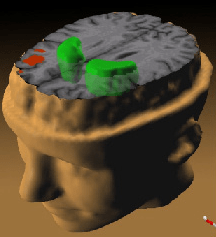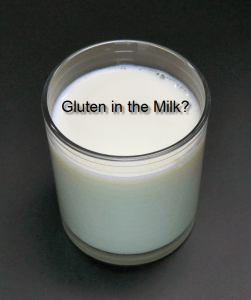 The Signs of Wheat-Gluten Sensitivity and Schizophrenia
The Signs of Wheat-Gluten Sensitivity and Schizophrenia
The clinical symptoms of coeliac disease and ‘
schizophrenia‘ bear marked resemblance. Both physical and psychiatric symptoms are present in children and adults with coeliac disease, although the incidence of ‘schizophrenia’ is greater in children than in adults. Coeliac disease results in part from an impairment of food absorption from the intestine. Coeliac patients are classically very thin and have a protruding relaxed abdomen. Bowel movements are frequent and are fatty, loose, large and foul. Facial expression is typically shriveled and drawn, suggesting a state of melancholy. In fact, the psychiatric picture of the coeliac child is not unlike that of the schizophrenic child. Both are dissociated from the world, weepy and introverted. Coeliac patients are also subject to mood disorders such as extreme depression and anxiety. These mood behaviour swings occur after cereal grain is eaten and subside when such food is carefully avoided. In adults, large blisters may occur on the skin on the back of the hands (dermatitis herpetiformis).
The toxic element high is responsible in coeliac disease is gluten, a protein found in wheat, rye, barley and oats. The mechanisms that produce gluten intolerance have yet to be fully determined. The theory is that intestinal enzymes cannot digest the gluten and accumulating toxic material irritates the lining of the intestinal wall, causing chronic indigestion and malabsorption of all nutrients. Yet another theory suggests that exorphins found in gluten compete with the body’s endorphins which are vital brain chemicals involved in mood. Removal of wheat gluten and similar gluten proteins found in other cereal grains has been shown to improve digestive processes, promote weight gain, and to alleviate mood and psychiatric symptoms.
 Milk Can Also Contribute to The Disease
Milk Can Also Contribute to The Disease
The importance of considering gluten sensitivity is well demonstrated in a study by Dr. Dohan in 1969[x]. He randomly placed all men admitted to a locked psychiatric ward in a Veterans Administration Hospital in Coatsville, Pennsylvania, either on a diet containing no milk or cereals, or on a diet that was relatively high in cereals. (
Milk was eliminated from the diet because some people do not benefit when only glutens are removed). All other treatment continued as normal. Midway through the experiment 62% of the group on no
milk and cereals were released to a ‘full privileges’ ward while only 36% of those patients receiving a diet including cereal were able to leave the locked ward. When the wheat gluten was secretly placed back into the diet, the improved patients relapsed.
The same results were found in a study by Drs Mohan Singh and Stanley Kay, at the Bronx Psychiatric Centre in New York[x]. Fourteen
schizophrenics were kept on a gluten-free diet for 12 weeks and given a special drink, containing, among other ingredients, either soy protein for the first four and last four weeks or wheat gluten in the middle four weeks. During the four weeks in which they consumed wheat gluten there was marked deterioration in almost all behavioural yardsticks measured.
These studies indicate that, at present, diet is the crucial factor in treating gluten-sensitive schizophrenics. Therefore, wheat-gluten sensitivity should be considered in the pathogenesis of the ‘
schizophrenias‘ and once diagnosis has been made, patients should understand and employ a diet free from milk and cereals.
Recognizing wheat-gluten sensitivity is frequently difficult because classical symptoms are often absent. When either the doctor (or nutritionist) or the patient is even vaguely suspicious of gluten sensitivity, a special diet can be undertaken for a trial period. Weeks or months may be required before a marked improvement appears after wheat, rye, barley, oats and milk are removed from the diet. Re-introduction of these grains and milk into the diet usually produces a relapse in months, days or even hours! It is important, then, to maintain a strict adherence to the diet and to be aware of the exact ingredients of many foods.
With removal of the offending foods, irritability, mood swings, compulsive behavior and other psychiatric disorders will subside. Dr. Dohan suggests that elimination diets should be tried for at least six months to a year. Further investigation is needed to determine how long the milk and cereal free diet must be followed to determine the possibility of developing a ‘gluten tolerance’ which would permit careful re-introduction of these foods into the diet.
Did you miss part 1 & 2? GFS would like to recognize and thank our guest author – Dr.
Patrick Holford.
Get help going
TRUE Gluten Free here <<<
One Response
This really describes my condition. I am very much underweight and have a relaxed protruding abdomen. I also have all the other symptoms you descrobed. Will stay strickly off all grains from now on. Could beans give a coeliac person the same problems is what I’m wondering?